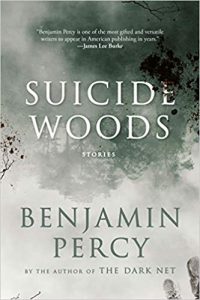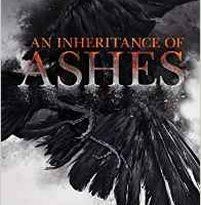Paula Guran Reviews Suicide Woods by Benjamin Percy
 Suicide Woods, Benjamin Percy (Graywolf 978-1-644-45006-2 $16.99. 216pp. tp) October 2019.
Suicide Woods, Benjamin Percy (Graywolf 978-1-644-45006-2 $16.99. 216pp. tp) October 2019.
Benjamin Percy’s writing is immaculate. Each word seems so carefully chosen the reader cannot imagine a synonym that would better suit. This slender volume is not a fast read. With such craft, a reader must slowly savor the nine stories and the single novella in Percy’s third collection. All are relentlessly dark, but the darkness springs from a variety of sources and tropes.
In “The Cold Boy”, set in an isolated Midwestern winter, a loner taxidermist hauls his young nephew from a frozen pond. Miraculously, the child has not drowned, but his algific animation has no resemblance to familiar life.
Several of the tales could be called crime stories, but none are traditional. “Suspect Zero” evolves from the discovery of a corpse to the revelation of an improbable expert criminal. A telemarketer slowly discloses both a suitably modern-day murder via cell tower and the disassociation of 21st-century life in “Dial Tone”.
The central character in “The Dummy” is a young outsider for whom gender identity is not confined by the norm. Here, a violent crime is interrupted by a supernatural note.
“Writs of Possession” is about the crimes of societal disenfranchisement and bureaucratic horror, of those being evicted or dispossessed as well as one who must enforce the deprivation. It seems almost surreal, but it is the profound terrors of reality and everyday life that make this story stick with you.
A plague rapidly brings an end to civilization in “The Balloon” and humankind proves how frightening it can be. The most bizarre of the bunch is probably “Heart of a Bear”, in which a bear observes a human family and then decides, tragically, to try life as a human. Percy mixes surreality, fairy tale, and perhaps fable in the story.
As for the busy accountant in “The Mud Man”, “tidy calculations exhilarate him and inform everything he does.” A nonhuman duplicate relieves him of the tedium of daily family life but leads to a conclusion “difficult to process, completely outside the boundaries of mathematical principles.”
“Suicide Woods” uses the “bad place” theme, but is the dreadful location the cause of calamity, or have the damaged people visiting there brought catastrophe with them?
Novella “The Uncharted” is set in a mysterious area in the Alaskan wilderness where visitors tend to disappear. Each of a group who go exploring there has his or her own challenges. Their journey starts with disaster, but beyond that, the reader can’t be sure what is real and what is imagined.
There is great beauty in all this darkness and, somehow, a glimpse of how we can overcome it.
Paula Guran has edited more than 40 science fiction, fantasy, and horror anthologies and more than 50 novels and collections featuring the same. She’s reviewed and written articles for dozens of publications. She lives in Akron, Ohio, near enough to her grandchildren to frequently be indulgent.
This review and more like it in the February 2020 issue of Locus.
 While you are here, please take a moment to support Locus with a one-time or recurring donation. We rely on reader donations to keep the magazine and site going, and would like to keep the site paywall free, but WE NEED YOUR FINANCIAL SUPPORT to continue quality coverage of the science fiction and fantasy field.
While you are here, please take a moment to support Locus with a one-time or recurring donation. We rely on reader donations to keep the magazine and site going, and would like to keep the site paywall free, but WE NEED YOUR FINANCIAL SUPPORT to continue quality coverage of the science fiction and fantasy field.








